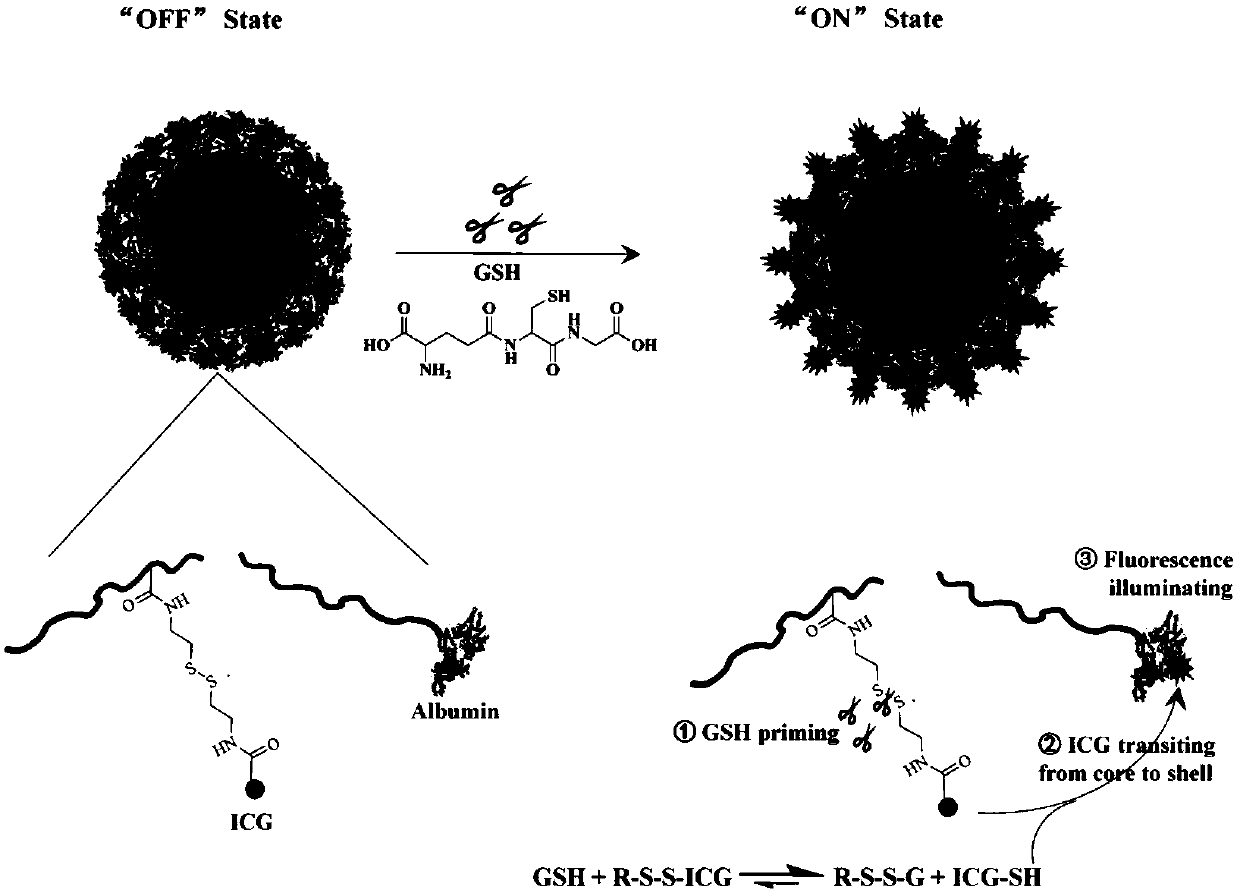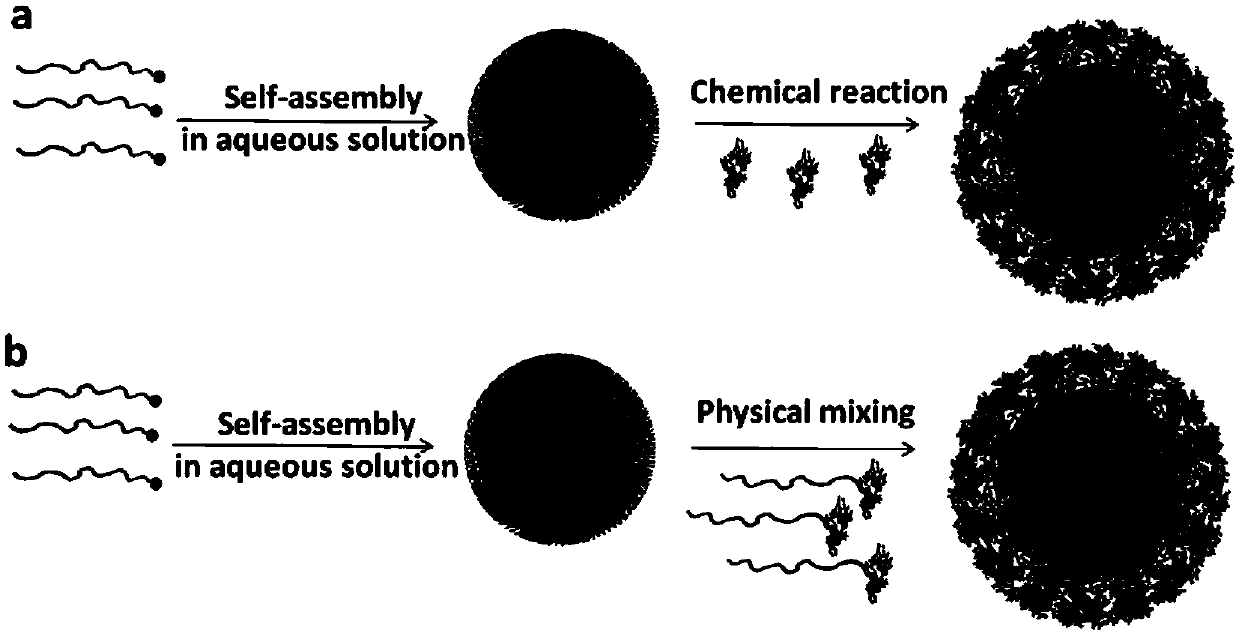Structure, preparation and applications of reduction responsive fluorescent probe
A fluorescent nanoprobe and responsive technology, applied in the field of organic fluorescent probes, can solve the problems of insufficient imaging signal-to-noise ratio, low response efficiency, affecting imaging signal-to-noise ratio, etc., and achieve good tumor imaging specificity and improve High response efficiency and high imaging signal-to-noise ratio
- Summary
- Abstract
- Description
- Claims
- Application Information
AI Technical Summary
Problems solved by technology
Method used
Image
Examples
Embodiment example 1
[0026] Implementation Case 1. Synthesis of Reduction-Sensitive Indocyanine Chloride Fluorescent Nanomaterials
[0027] (1) The reduction-responsive copolymers were synthesized in three steps. In the first step, a certain amount of CTAm, diisopropylaminoethyl methacrylate (DPA), and azobisisobutyronitrile (AIBN) were dissolved in dimethylformamide (DMF), and subjected to three freeze-thaw cycles Finally, react under the protection of argon at 70°C for 24 hours, and the reaction product is dialyzed with pure water for 2 days and freeze-dried; the second step is to weigh a certain amount of the product obtained in the previous step, and dissolve it together with butyl methacrylate (BMA) in In DMF, after three freeze-thaw cycles, react under argon protection at 70°C for 24 hours, and the reaction product is dialyzed with pure water for 2 days and freeze-dried; the third step is to combine the carboxyl end of the product of the second step with the hydroxyl end of mPEG5000 couplin...
Embodiment example 2
[0030] Implementation Case 2, Preparation of Reduction Sensitivity Indocyanine Chloride Fluorescent Nanomaterial (Method I)
[0031] Weigh a certain amount of copolymer-indocyanine chloride lyophilized powder, dissolve it with tetrahydrofuran, add it dropwise to deionized water under ultrasonic conditions, and then use a 100KD ultrafiltration tube to ultrafiltration at 4000rpm. After filtering 4-5 times, dilute to an appropriate concentration. In order to obtain fluorescent nanoprobes, weigh an appropriate amount of copolymer-albumin conjugate, dissolve it in the nanoparticle solution of copolymer-indocyanine chloride conjugate, and vortex.
Embodiment example 3
[0032] Implementation Case 3, Preparation of Reduction Sensitivity Indocyanine Chloride Fluorescent Nanomaterials (Method II)
[0033]Weigh a certain amount of copolymer-indocyanine chloride conjugates with double bonds, dissolve them in tetrahydrofuran, add them dropwise to deionized water under ultrasonic conditions, and then use a 100KD ultrafiltration tube to ultrafiltration at 4000rpm. After filtering 4-5 times, dilute to an appropriate concentration. Then, add bovine serum albumin in an equal proportion to the double bond, and stir magnetically for 24 hours.
PUM
 Login to View More
Login to View More Abstract
Description
Claims
Application Information
 Login to View More
Login to View More - R&D
- Intellectual Property
- Life Sciences
- Materials
- Tech Scout
- Unparalleled Data Quality
- Higher Quality Content
- 60% Fewer Hallucinations
Browse by: Latest US Patents, China's latest patents, Technical Efficacy Thesaurus, Application Domain, Technology Topic, Popular Technical Reports.
© 2025 PatSnap. All rights reserved.Legal|Privacy policy|Modern Slavery Act Transparency Statement|Sitemap|About US| Contact US: help@patsnap.com



